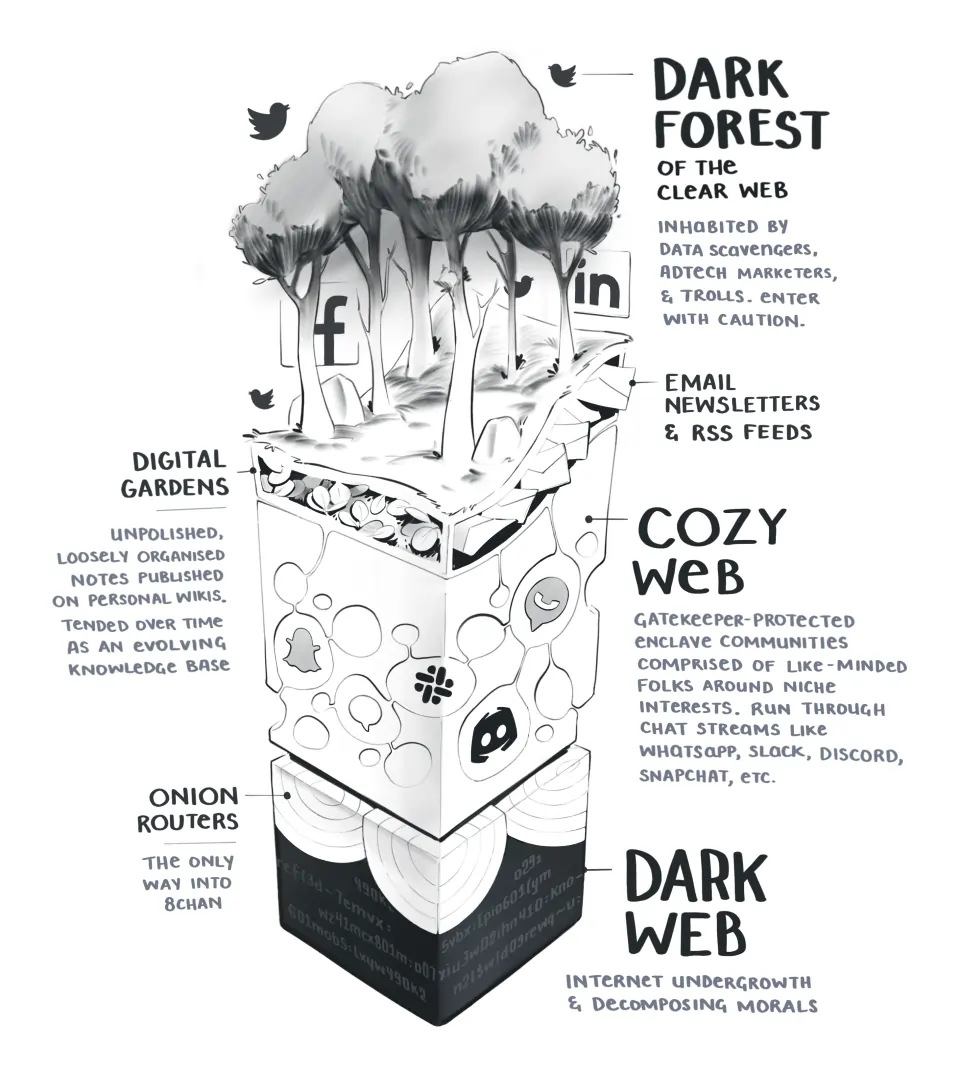”The universe is a dark forest. Every civilisation is an armed hunter stalking through the trees like a ghost.” Liu Cixin, The Dark Forest
The dark forest and the cozy web
I first became aware of the dark forest hypothesis 10 years ago when reading the English translation of the “Remembrance of Earth’s Past” trilogy by Liu Cixin. Movie trailer voice: “Now a blockbuster Netflix series - 3 Body Problem”. The dark forest is one of the possible explanations of the Fermi paradox: given billions of stars and planets, why are there no signs of life?
The dark forest hypothesis proposes that other cosmic civilisations are hiding because space is full of predators. Civilisations announcing themselves to the universe become prey and are extinguished. Cheerful.
Yancey Strickler, the co-founder of Kickstarter, wrote that the internet was becoming a dark forest. The predators in this case are commercial monopolies, like Google, Facebook, Amazon, trolls, attention-hungry influencers etc. Individuals venturing into the dark forest and announcing their existence become farmed for profit, with little or no regard for privacy or social consequences.
At about the same time, Venkatesh Rao coined the term “cozy web” to explain how many people were retreating from the dark forest. The cozy web exists “in a high-gatekeeping slum-like space comprising slacks, messaging apps, private groups, storage services like dropbox, and of course, email.”
These spaces are more private and personal, often being invitation-only. Subjectively, the cozy web is where I have all the best conversations and develop real online relationships.
Maggie Appleton produced a great diagram to explain these layers. I’m hoping she won’t mind me showing you here but you should read her thoughts as she’s much more eloquent on the topic than me.

Campfires in the forest
I think the IndieWeb is a beacon of hope, like campfires in the grim, dark forest of the corporate web. At its core, the IndieWeb champions principles such as ownership of content, the creation and maintenance of personal websites, and POSSE (Publish (on your) Own Site, Syndicate Elsewhere), all aimed at fostering genuine interpersonal connections.
By encouraging individuals to build their own spaces on the web through tools like personal websites, microformats, indieauth, webmentions and activitypub, the IndieWeb helps people craft a piece of the internet that is truly theirs. The movement not only supports the autonomy of web users but also integrates the personal, authentic experiences reminiscent of the cozy web into the broader digital landscape.
Yes, there’s a technical learning curve, but for engaged citizens of the 21st Century, I think it’s a curve worth ascending.












